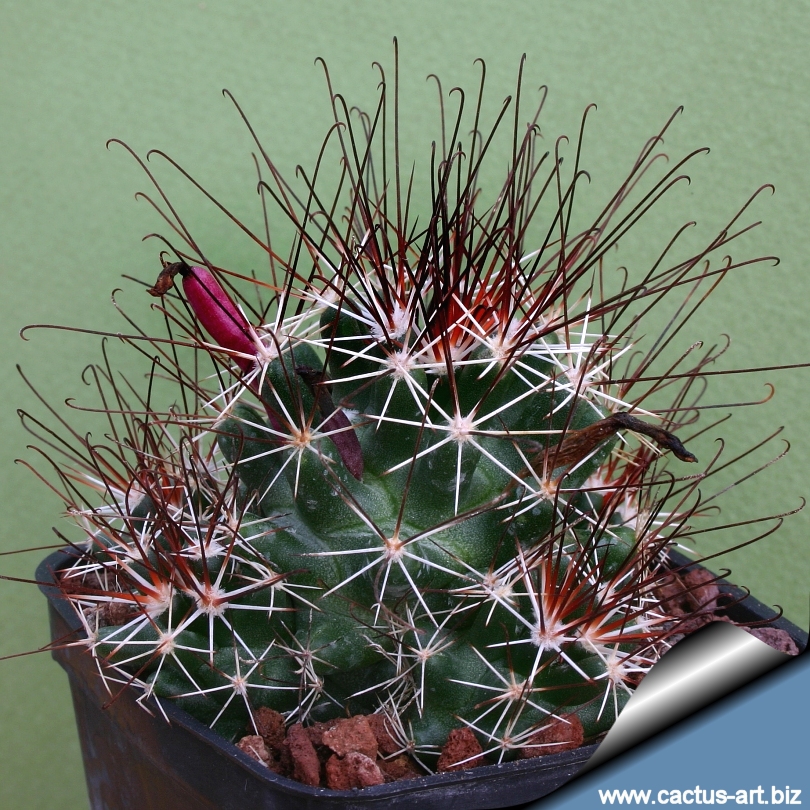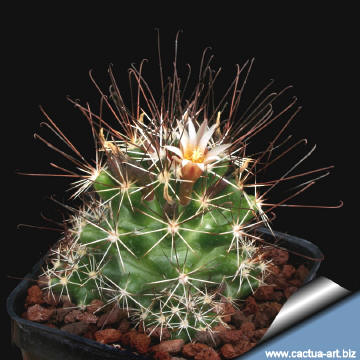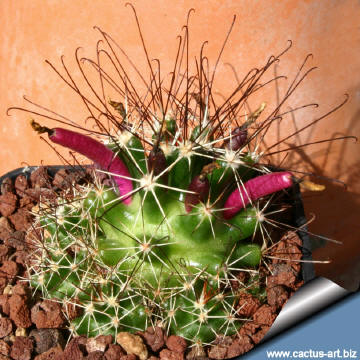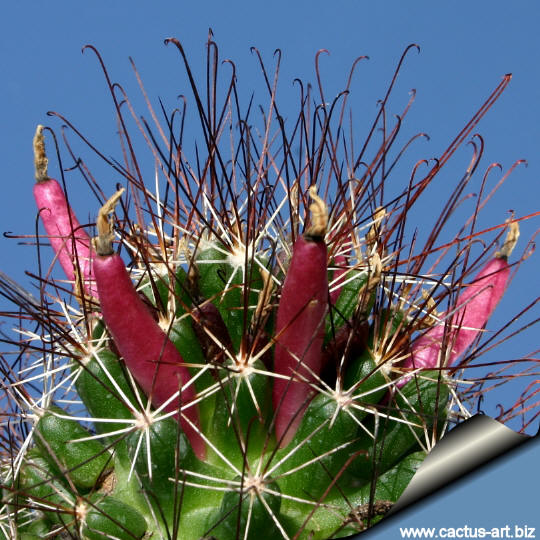|

Cumarinia odorata
is a very small plant from Mexico that deserves to be more widely grown.
Cumarinia is a monotypic genus.
Cumarinia odorata was described as Coryphantha odorata by Bödeker in
1930, transferred into the genus Neobessaya by Werdermann and thence to
the new genus Cumarinia by Knuth which, in turn, was reduced to a
sub-genus of Neolloydia by Backeberg in 1942.
The name Cumarinia has persisted, probably because it is far from being
a typical Neolloydia species. Additionally it does not fit into the
Neolloydia mould on account of its hooked central spines, it has olso
many differences from the Coryphantha so, it is a good genus according
to The New Cactus Lexicon (2006) nowadays.
Description: It is a small clustering cactus which clusters at an
early age.
Stem: Globose or elonged up to 4 cm tall, up to 3 cm in diameter.
Tubercles: Cylindrical, soft 1 cm long with hairy axils. There is
a shallow groove on the upper part.
Central spines: 3 or 4 all hooked black, dark-reddish to yellow,
up to 2.5 cm long,
Radial spines: 7 to 9 short white, or yellow, with brownish tips
Flowers: Diurnal, small 1.2 cm in diameter, 1.5 cm long,
yellowish pink. in appreciable numbers at an early age.
|
|
Cultivation: In culture
C. odorata is without problems and regularly shows its flowers. Water sparingly,
it is sensitive to overwatering (rot prone) needs good
drainage, Keep drier in winter. Flowers
quite early. Need full sun; hardy to -5° C or less for short periods of time.
Keep drier in winter.
Advertising
|





